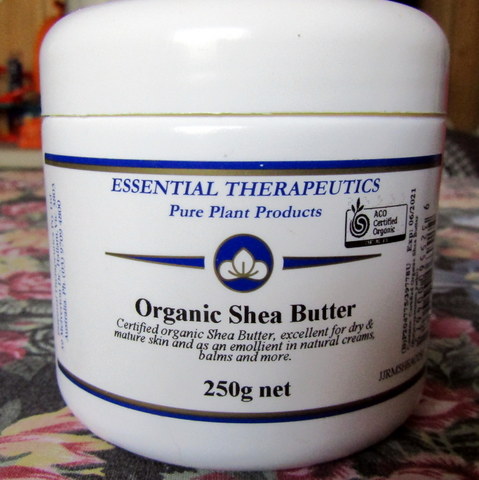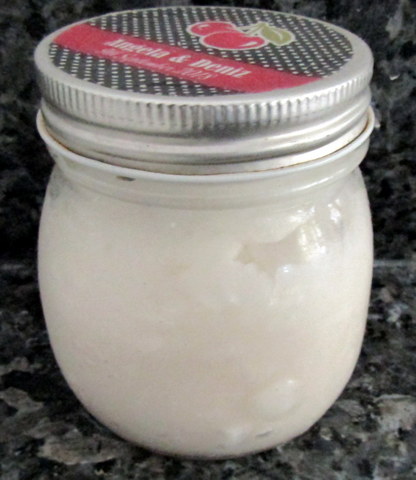When I originally put my home made deodorant together I thought it was pretty good, but as I continued to use it throughout the year I found that it had a problem. The base is coconut oil, which has a sharp melting point and this means that when you come to apply it, it tends to be either a hard solid or sludgey (technical term) liquid. So what to do?
What to do, it turns out, is to include a material with a broader melting point where you get a soft phase between liquid and solid that makes application easier. After some hunting around I found that shea butter would work quite well, if added at a level of a bit over 20% by volume.
Shea butter has another advantage in that it is also very good for the skin. The downside is that it is expensive! Depending on how much you pay ($4.00 to $6.00/100gms) it will effectively double the cost of your deodorant. That may or may not be significant to you.
What I have found, however, is that even in the dead of winter here the product is still not rock hard like the coconut oil only formulation was, and for most of the year it maintains a consistency which is easy to apply with a cosmetic sponge, although in really hot weather it can still go a bit sludgey. Overall, I think that it is a considerable improvement over the original formulation.
The formulation I used is as follows -
4 tablespoons virgin coconut oil 28.5%
3 tablespoons shea butter 21.5%
4 tablespoons baking soda 28.5%
3 tablespoons arrowroot 21.5%
Vanilla essence 10 drops
As an aside, the bottle I wanted to use to hold it was a somewhat irregular glass jar I picked up at my daughters’ wedding, and I wanted to fill, but not overfill it. If you have not come across the idea before, the way of measuring the internal volume of a container easily is to grab a scale and place the container on it and tare the container (reduce weight to zero). Then add in water to the level you intend to fill the container to and re-weigh. The number of grams of water is also the number of millilitres of water, thus telling you the volume of the container.





